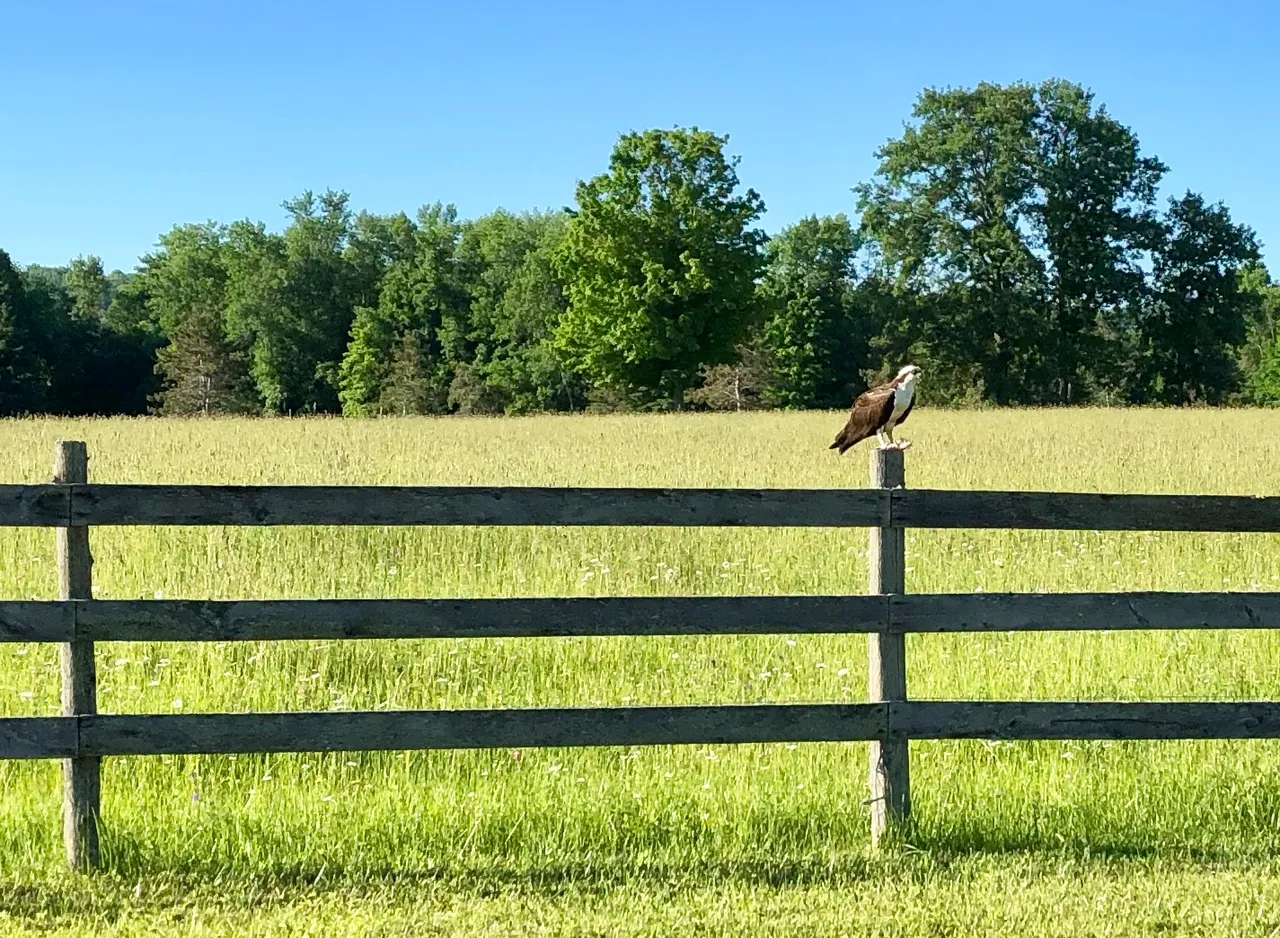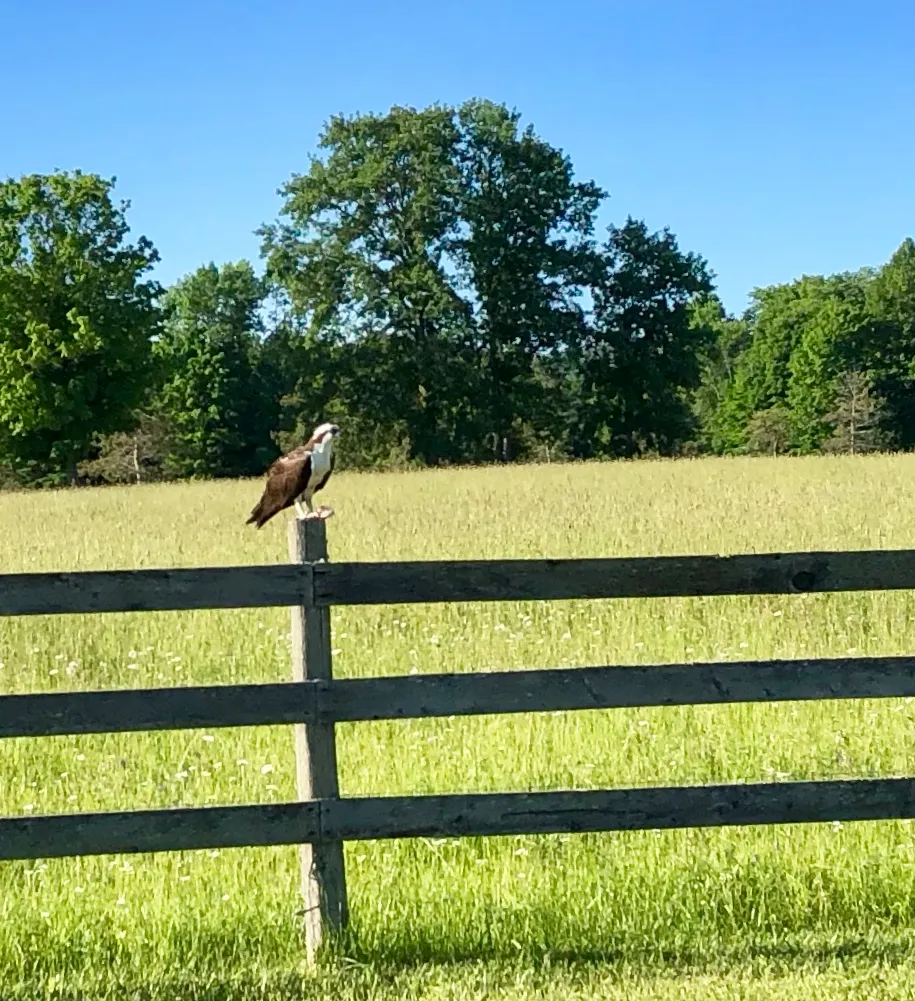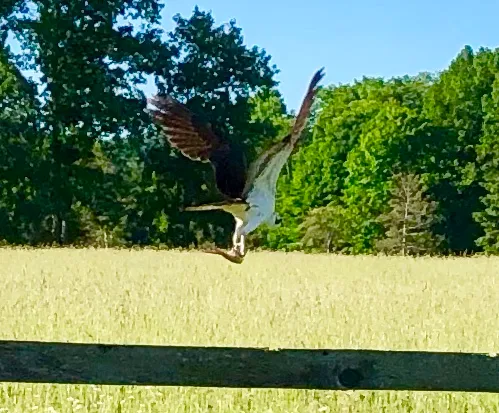Some of you may know (or remember from a previous post) that I have a thing for large birds of prey.
Osprey are considered to be diurnal which means that they generally tend to be active during the day and they sleep in nests during the night.

Osprey predominantly eat fish and because of this fact, they are often referred to as either a river or sea hawk.
This one (in the photo below) has just caught a fish and is actually standing on it, on the fence post.

Osprey are generally 2 feet tall and they have a 6 foot wing-span.

I wanted you to be able to see what I see so l’ve included a small GIF of this osprey as it flies away carrying the fish.

In the photo (below) you can see the birds’ nest. It’s built on a wooden platform that was specifically constructed to facilitate and attract the osprey to nest there. A mating pair calls this nest their home and they have built it out of fairly substantial tree branches. Nests are re-used from one year to the next and sometimes they are reused for decades. Of course, the birds do repair their nests as needed.

These birds are migratory (in my area of Ontario, Canada). They breed in the late Spring (May to early June) and fly as far as South America for the Winter (starting their migration in September.)
Osprey are the second most widely distributed raptor species on our planet. Second only to the Peregrine Falcon.
Osprey are found on every continent, with the exception of Antarctica and they mate for life.
I welcome your comments and I invite you to follow me on my journey...I’ll do my best to show you as many raptors as I can, in their natural habitat.
 Rebecca
Rebecca